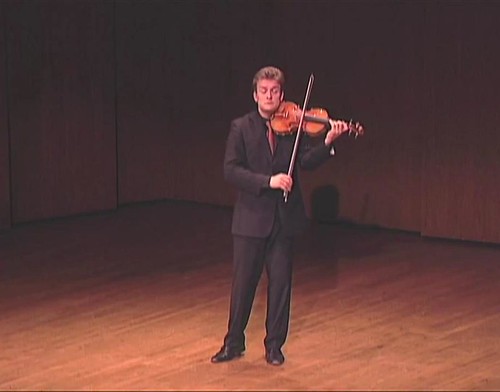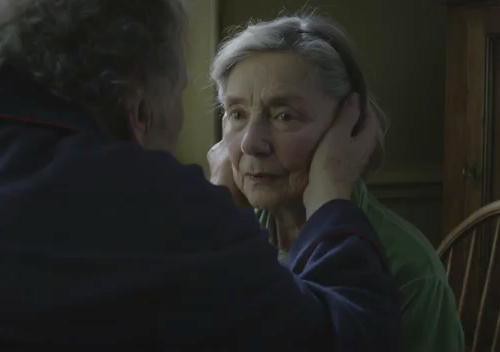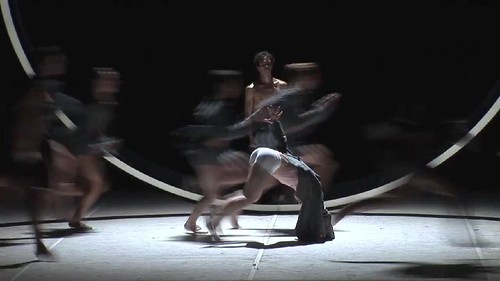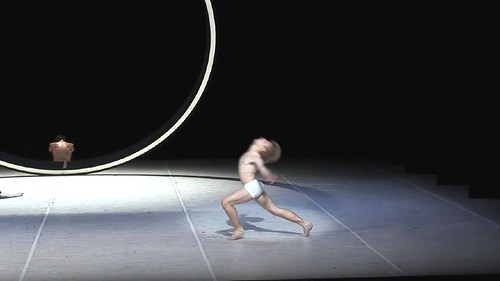Several years ago, I had heard Tetzlaff performing Brahms' Violin Concerto with San Francisco Symphony and was deeply impressed by his austere musicianship and for this recital, he offered something both familiar and more readily accessible, to me, (Bach and Ysaÿe), and something off the beaten track and more challenging (Kurtág and Bartók. Of these music, I found Kurtág and Bartók most satisfying, perhaps due to the unfamiliarity and my joy of hearing these strange music fresh. Kurtág's music consisted of strings of short fragments but very eloquent and coherent, and quite lyrical Tetzlaff's virtuosity of playing these challenging music was extremely impressive, yet, what impressed even more was the stylistic accomplishment he demonstrated for the entire evening, and his seriousness, his unflagging concentration and intensity, though his playing was not without lighthearted humor at the appropriate moments. He produced beautiful and sweet, and sometimes very unusual tones but these sounds all served a purpose, the coherent statement of the music. His piano, pianissimo playing would live on forever.
The programed pieces he played were:
- Eugène Ysaÿe - Sonata for Violin in G minor
- György Kurtág: "A choice" out of Signs
- Johann Sebastian Bach - Sonata for Violin in C major
- Béla Bartók - Sonata for Violin
As for me, I'll start to listen to Kurtág when I paint.

Christian Tetzlaff plays Bach
On Friday, I finally made time to see the much talked-about film Amour written and directed by Michael Haneke, who had made many unforgettable films such as Caché, The Piano Teacher, and The White Ribbon.
Amour, a story on love and death, was a beautiful movie, confidently made and very difficult to watch. It stared at the difficult situation one is bound to face at certain time, unflinchingly, and the result was wrenching but not depressingly so. We took comfort in the humanity and obvious love the main characters, a cultured old Parisian couple, demonstrated in front us, gesture by gesture, syllable by syllable.

Amour by Michael Haneke
Since the main character was a piano teacher, we had several glimpse of her star pupil, the real-life great pianist, Alexandre Tharaud, who played himself in a very natural way and I kept wondering if this was his life story or not but was reluctant to find out. One way or another, it wouldn't change the perception of this great movie about love and death in old age. And if it was not Tharaud's teacher's story, it would be other people's stories.
Was the movie depressing? No. Disturbing? Yes; but a must-see.

Alexandre Tharaud in Amour
On Sunday, 17th, I dived into one of the most disturbed mind and heart of a great dancer - Vaslav Nijinsky, via the modern ballet by John Neumeier, who had created many modern classics and was touring with his Hamburg Ballet, as part of the regular season program offered by San Francisco Ballet.
I was very grateful to be able to see any full-length ballet created by John Neumeier. If his ballets were not as pure balletic as those from Imperial Russia, they were unfailingly probing and intense, such as his dark-hued The Little Mermaid presented in San Francisco several seasons before.
The first act of the ballet mostly concentrated on Nijinsky's life and creative experience, with many of his famous roles invoked by various dancers, juxtaposing with important people in his tumultuous relationships. It was often amusing but somewhat prosaic. Act two led us into his troubled inner world, with his mind descending to madness while the exterior world was a living hell of World War I. I found the corps of soldiers and the solo turns of the pathetic Petrushka unbearably moving. Another great creation was the shadow of Nijinsky (in white brief in the pictures below), whose surreal, insistent and twisted presence put both Nijinsky and the audience on edge. The hallucination went on and on and I was utterly exhausted and became impatient for it to be over, despite the amazing dance on stage. The gesture and motif did become repetitive and eventually monotonous. Perhaps, that was by design? The music of Chopin, Schumann, Rimsky-Korsakov and Shostakovich were played with thrilling brilliance.

Nijinsky by John Neumeier - Hamburg Ballet in San Francisco

Nijinsky by John Neumeier - Hamburg Ballet in San Francisco
What an exhaustive week, and what an extraordinary week.
Related posts on Art · 文化 · Kunst:





No comments:
Post a Comment